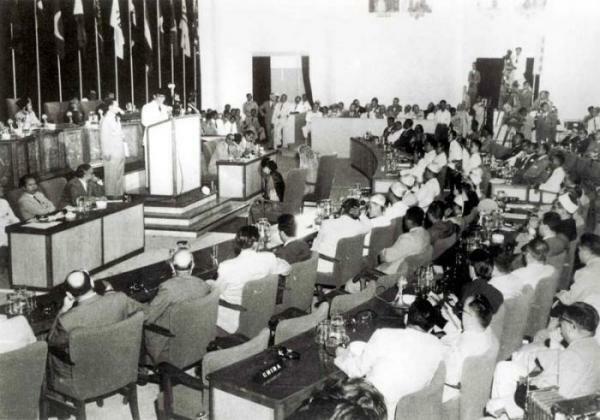Bandung Conference Summary

Image: more-history - blogger
Behind the end of World War II continued a movement that since the 1930s had been taking place in countries of Africa or Asia, this being the independence of the former colonies and the opposition to neocolonialism that has been attempted since the ancient metropolis. In this lesson from a TEACHER we bring you a summary of the Bandung Conference, which was another step in the commercial and social relations between the new countries that had been formed.
Within the summary of the Bandung Conference, we have to mention the main countries that made up this series of meetings. Although he encompassed a large number of them, the main leaders of independence They were:
- Jawaharlal Nehru (India)
- Gamal Abdel Nasser (Egypt)
- Sukarno (Indonesia)
These characters together with the leaders of Pakistan, Burma and Ceylon, began a series of interviews, to which they invited 25 other leaders in order to reach international agreements, of the so-called Non-Aligned Countries.
In this other lesson we will discover the development and end of World War II.
The April 18, 1955 The first meetings of the different leaders mentioned above, together with the invited countries, began in Bandung (Indonesia). Its objective, to promote cultural and economic cooperation between Africa and Asia, in addition to oppose the colonialist system that still exerted in diverse parts of the two affected and to the incipient neocolonialism carried out by the old metropolises and the United States.
In the same way, they also opposed the strong presence of the USSR in many moments of socio-political life. We know that, until April 24 of the same year, the meetings did not end.

Undoubtedly, a fundamental point in the summary of the Bandung Conference is the structure that was carried out. Three work commissions were created:
- Economical
- Politics
- Cultural
The results were put in writing in a statement in which the relationship would be favored between these countries and as a fundamental point we would find that they were called neutralists, that is say, they would not align with either of the two superpowers of the moment, since they did not want to fall into the patronage of either of the two.
As time passed, they came to admit to Cuba and Yugoslavia within their group, since, even though they were communists, they wanted to remain independent from the USSR.
To fix the results that they brought to light, they paid a lot of attention to the data collected by the United Nations, since They tried to defend themselves from possible violations towards very new and still socio-politically-economically weak countries talking.
Here you can discover the causes and consequences of World War II.



